“Mom, have you finished working? When will you have finished?”
“And why, Ady? Are you bored?”
“Well, maybe I am. I wanna make the butterflies again.”
“Aha. Well, frankly speaking, I don’t much feel like it. You know how Leo is again gonna be completely smudged and I wanted to finish this work.” (I am at a desk with a computer and books, preparing for a session with a client.)

“Ady, you are having a long while and would love to do something together, right?” I am trying not to deal with the situation or better said not to offer a solution immediately. Just want to put into other words what is going on with our four-year old fairy.

“Yes, mom. So, please come.”
“You know what, I am going to finish writing something here and then I will prepare the colours and papers for butterflies, ok? There’s the snow over there (there is “snow” for children made of flour and baking soda and similar ingredients placed in a glass jar inside a wooden crate) or homemade play dough and sticks and cones, so you can make something out of that, what do you think?”

As Adele was a bit ill, I prepared many activities at home. So, I made many kinds of snow and play dough as she asked for, or the kids cleaned the flour of toy animals and bathed them. But you know it – if it is the second or third day…
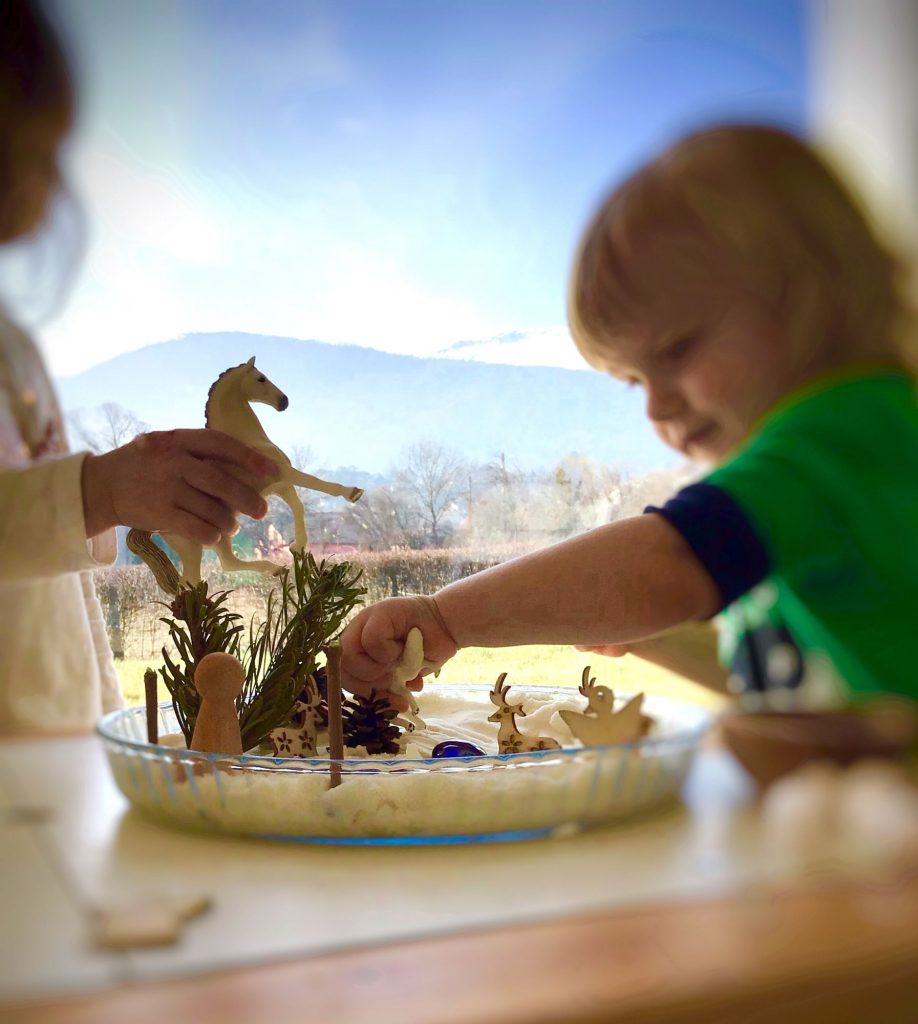
When Adele started getting bored, I actually silently crowed with delight. I admit, to have a psychologist for a mother is sometimes not easy.
Each child actually needs to get bored in order to enter their fantasy world.
An empty room can then turn into a magical planet, couch cushions can be used for building a rocket and a box turns into a space suit at once.
I then lose myself in work again when I hear, after a while, how my girl fell down and hurt her knee and some lady or perhaps another girl comes to soothe her.
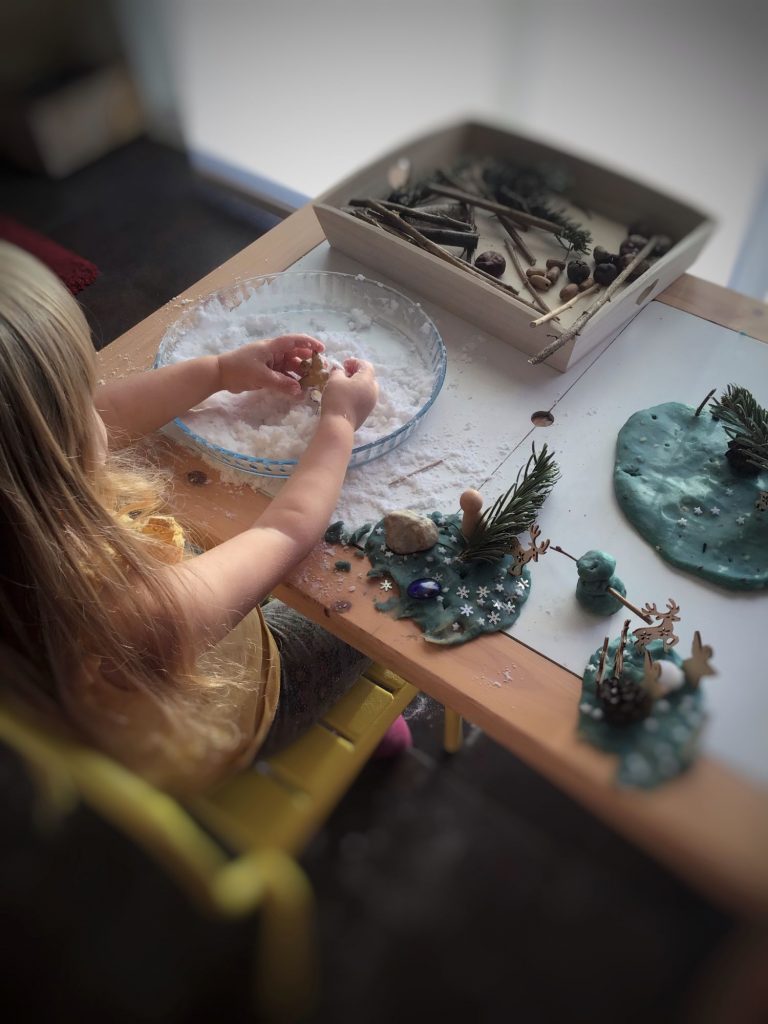
I smile slightly, seeing how a plain toothpick turned into a girl, while Mrs Adele plays an angel with a small wooden decoration. Only these two little things in the before mentioned snow.
Dramas of everyday take place and I wonder where she gets those ideas. She talks, tells off, shouts, cries, replays various situations.
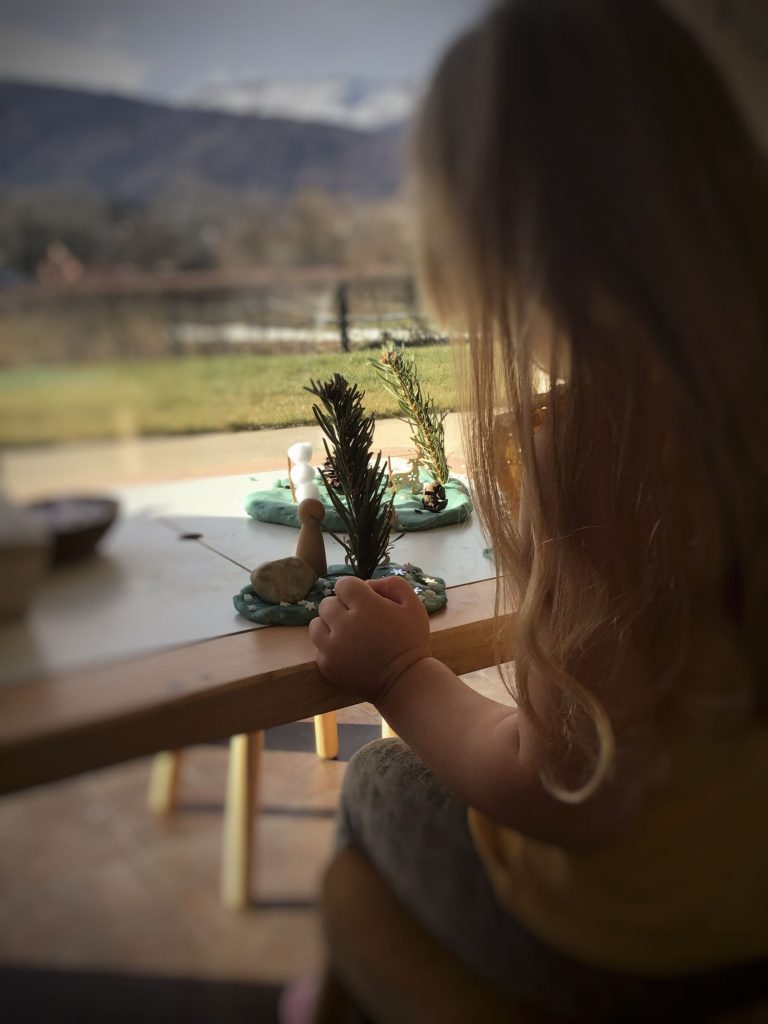
In short, I hear quite conflicting scenes to take place and I realize how important it is that in the game Adele has full control over everything. She directs everything, which is a great compensation for a child. Imaginary characters carry on dialogues, they play but also assertively argue.
Free Play and Process Art
That was such a beautiful example of free play. It is basically in simplifying the space and life. To introduce as few things and toys as possible so the child can play e.g., just with a teaspoon and use their imagination fully.
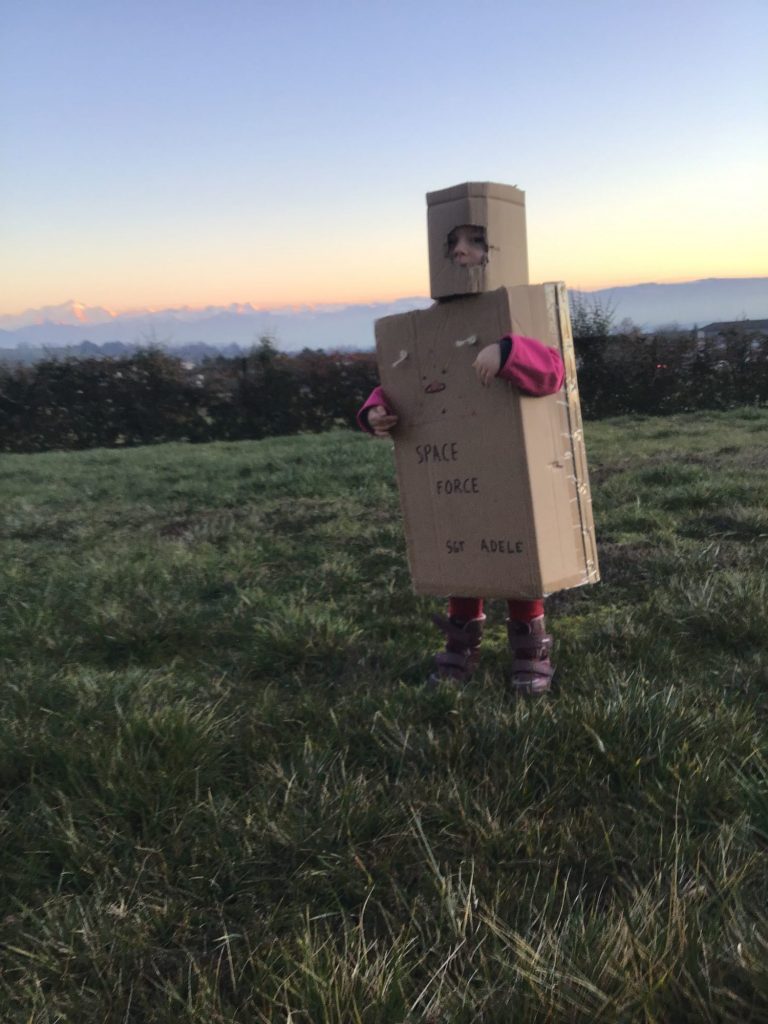
In today’s world we are overloaded with information, structure, running from one after school club to another and by a child development programme. We want the best for them. Curiously, it puts burden on them and does not develop their natural being.

Children up to at least six years of age need mostly free play and relaxation. It is a lottery win for them if their parents do not manipulate them into activities and structure but instead let them discover the world and their feelings in the present.
Let us help children awake their fullness, from which they will draw for the rest of their lives. And let’s feed their souls every day.
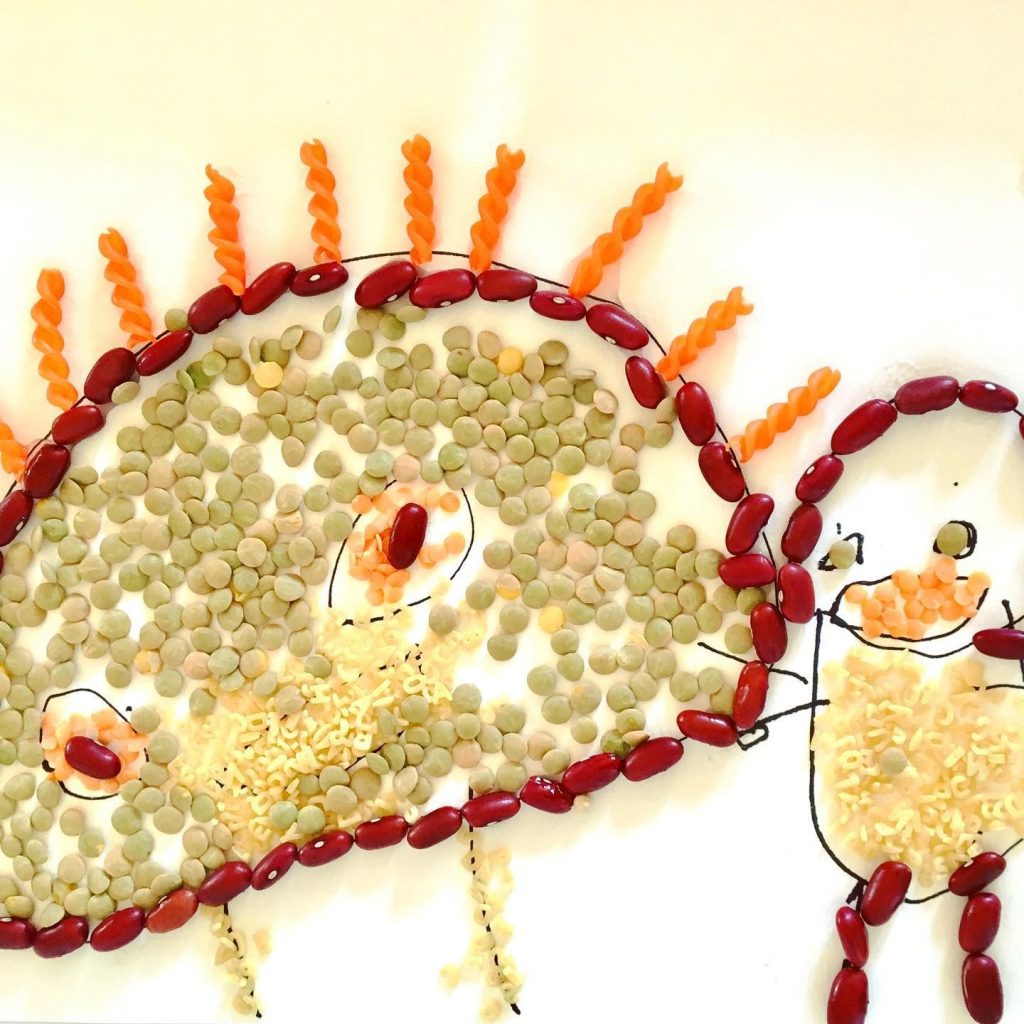
Benchmarks and comparing leads nowhere, it only feeds our ego and does the same in children. External achievements are only a fragment of a larger picture of being and happiness.
If we teach children to connect with their selves and the present moment, in my opinion we give them the most important gift.
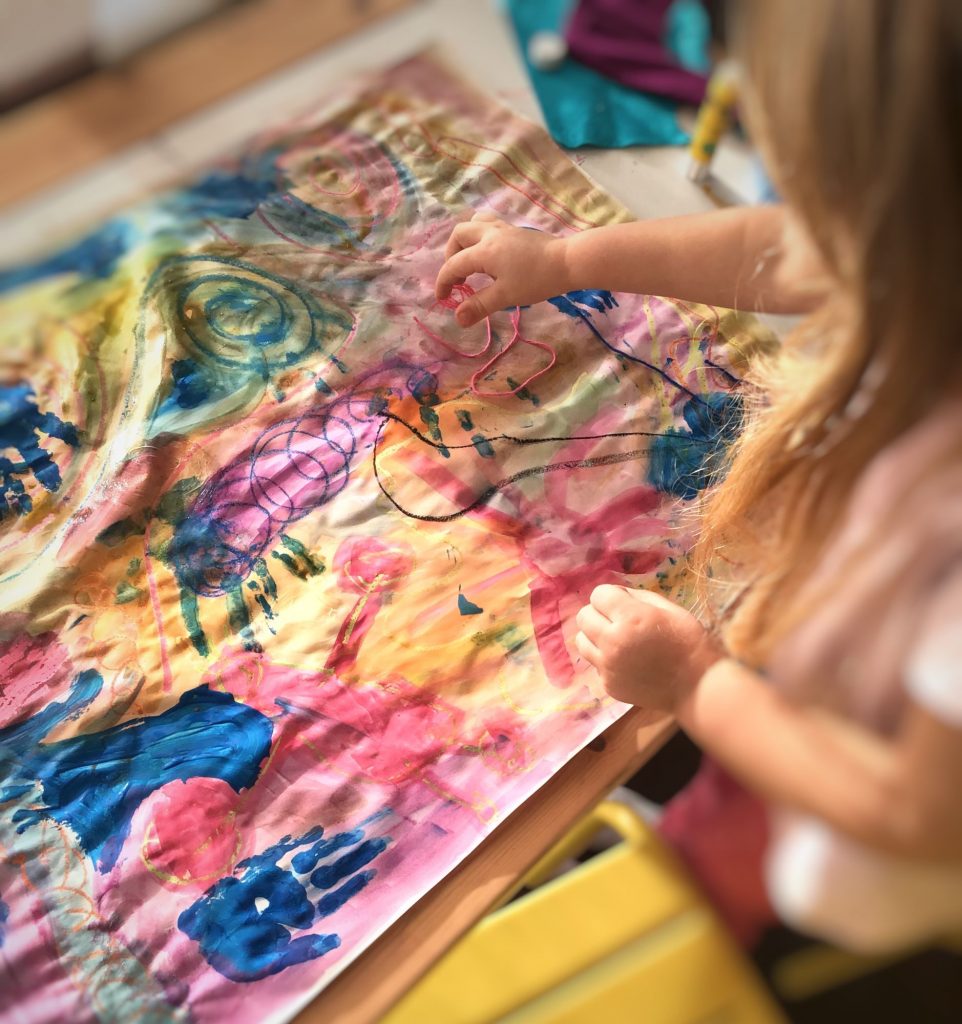
We are still a generation brought up largely focussing on performance. Our value and self-value are often derived from how much we manage. So, we live in constant activities, judging, labelling, and theorizing.
But. Frankly. Where is your value, who are you really? Is it easy for you to stop and perceive feelings and your body? Only to quietly watch what is happening?
How to Develop Emotion Control by Creating
Making art wonderfully helps children with tuning to feelings and perceiving the body and with processing daily experiences. Art that is not focussed on the product but on the actual process of creating.
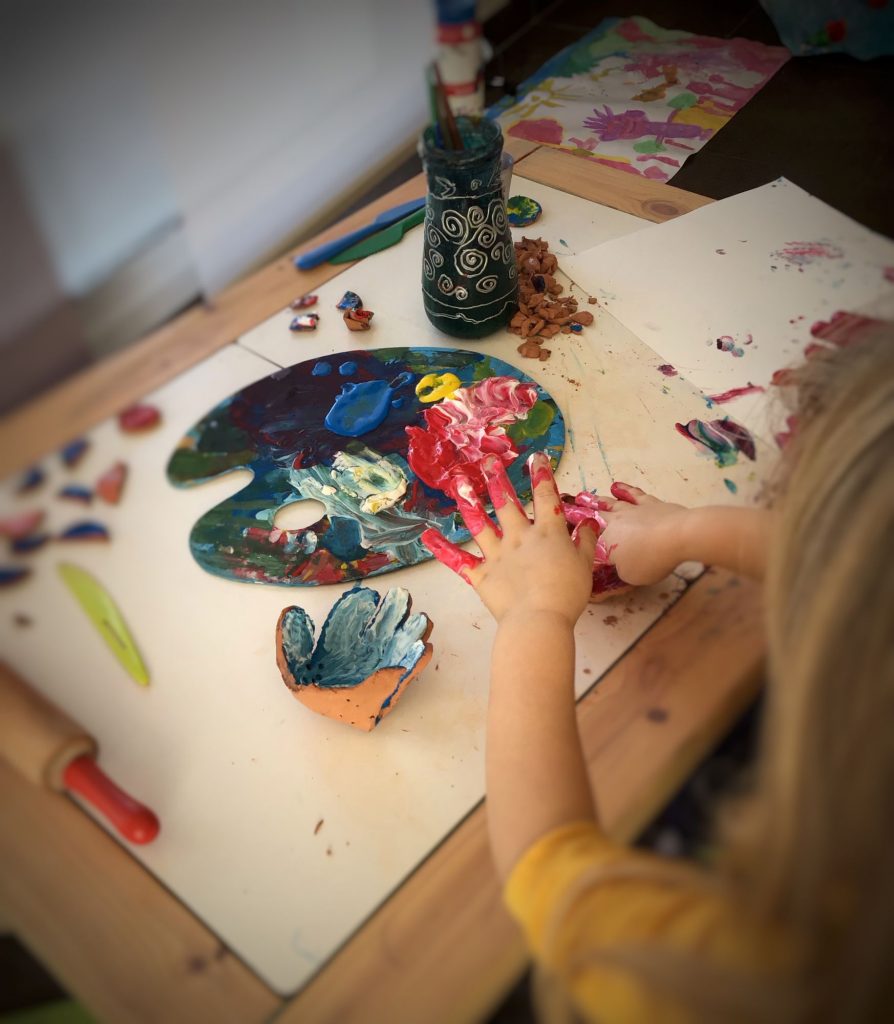
Art is important for the social and emotional development in the early childhood.
In the art process children not only live through their unprocessed or uneasy emotions but they learn to search for a solution to problems. When painting, modelling or during any other creative art (not product-focussed) they live through their experiences and develop their emotional intelligence.
What Is This Process Art?
It is art in which you give children (and yourself) various materials at their disposal and do not give any specific, step-by-step instructions. You basically don’t need any instructions and there is no telling what is good or bad. It is rather about exploring and playing.
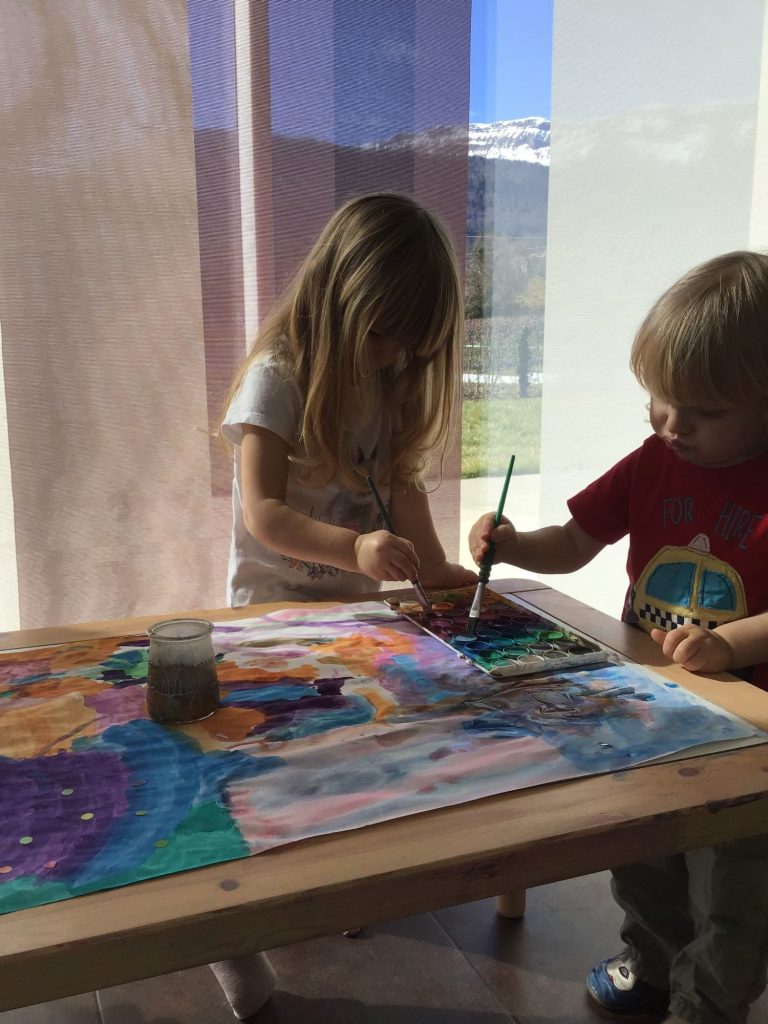
Each product coming from such art is thus unique and original.
The art process has a calming effect, it is a fantastic relaxation technique. At the same time, the project is fully in the child’s hands, the child is the “expert” and chooses everything on their own, the way they wish and need at that moment.
Children experience success with each art session, as there is no assessment, no right or wrong.

Process art wonderfully supports self-expression that helps us in dealing with any kind of problems.
It makes children more concentrated and relaxed.
And how do we go about it?
Variety of Materials
Always offer more materials, so that the child can choose. Children can use even untypical and untraditional tools. E.g., twigs for painting, or they can use a rolling pin to press the paper or they can take whatever they come up with and you don’t mind them using. You only ask what they want to make use of.

Enough Time
Another crucial condition is to give them enough time, not to push them into finishing stuff and not to limit them with a time horizon. Give them freedom even in this.
Support Them
Say yes as much as you can. Try to encourage their ideas, so they e.g., use flowers from your garden or whatever they have brought from a walk.
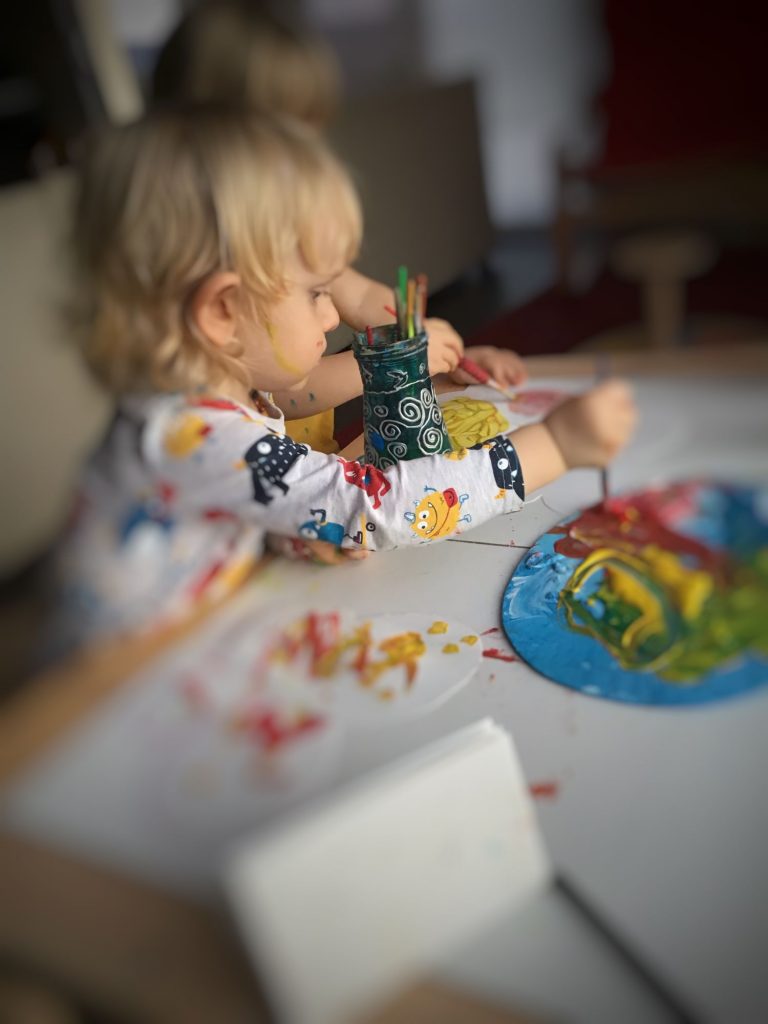
Offer the Unknown
Offer the new and unknown materials to them. Whatever you do not need in your household you can leave in a box and then make use of it in art together. Or better said offer it. I, for example, offer leaves, strings and flowers in summer, now it is sticks and twigs. They use them for painting or they impress them or they just play with them and with colours.
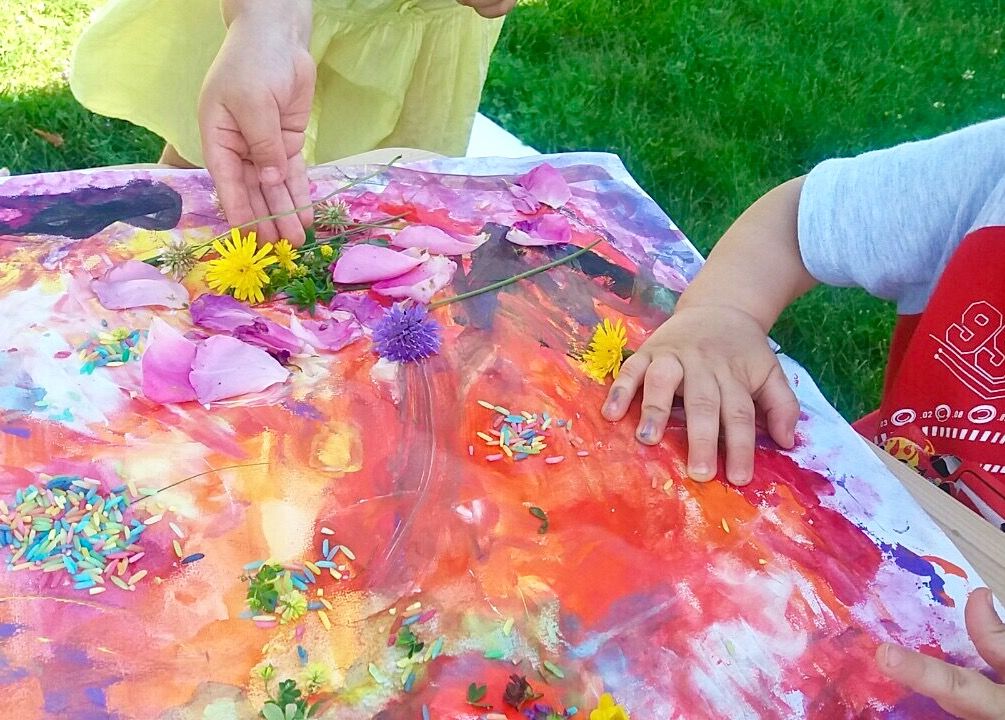
Exhibit the Art
In the end exhibit the children’s art. We haven’t completely figured this stage out yet after we moved house, so the art of our children is spread everywhere. But we bought a fishing net and attached the drawings and smaller pieces to it with clothes pins.
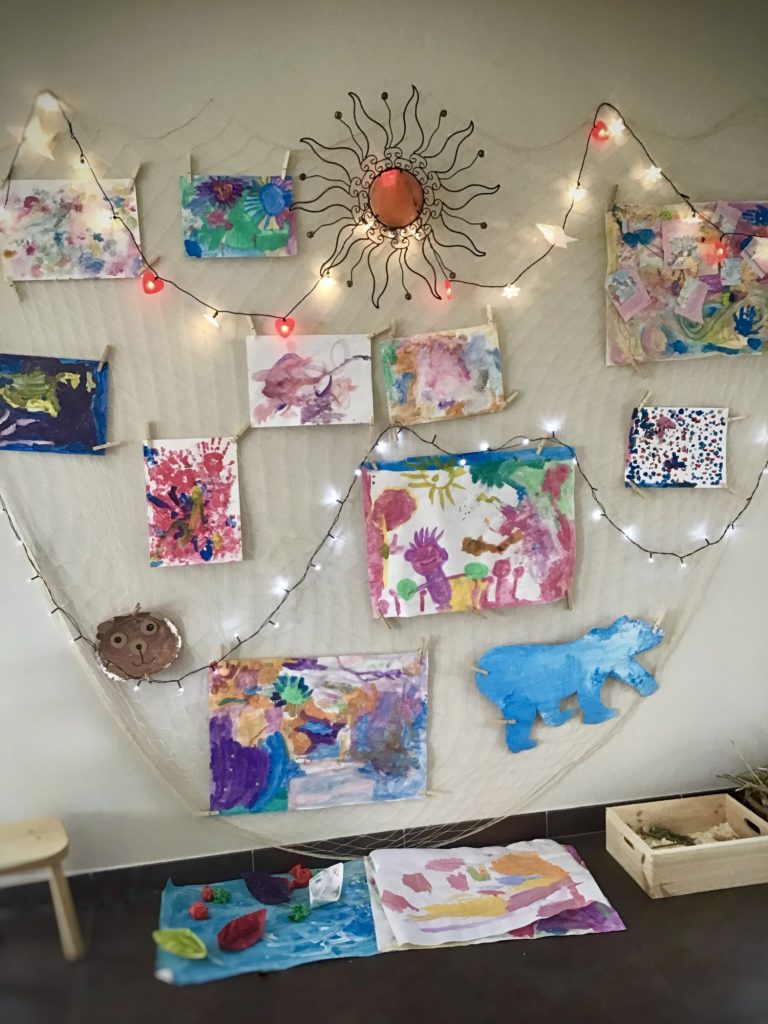
It is important to exhibit the art and be proud of it. To regularly see their own paintings is not only nice but even encouraging for children.
Specific Advice on What to Create with Children
At the end I have two tips for you for activities where the before mentioned process and a beautiful product meet. One is a simple, winter thing, and the other is in full bloom and colourful.
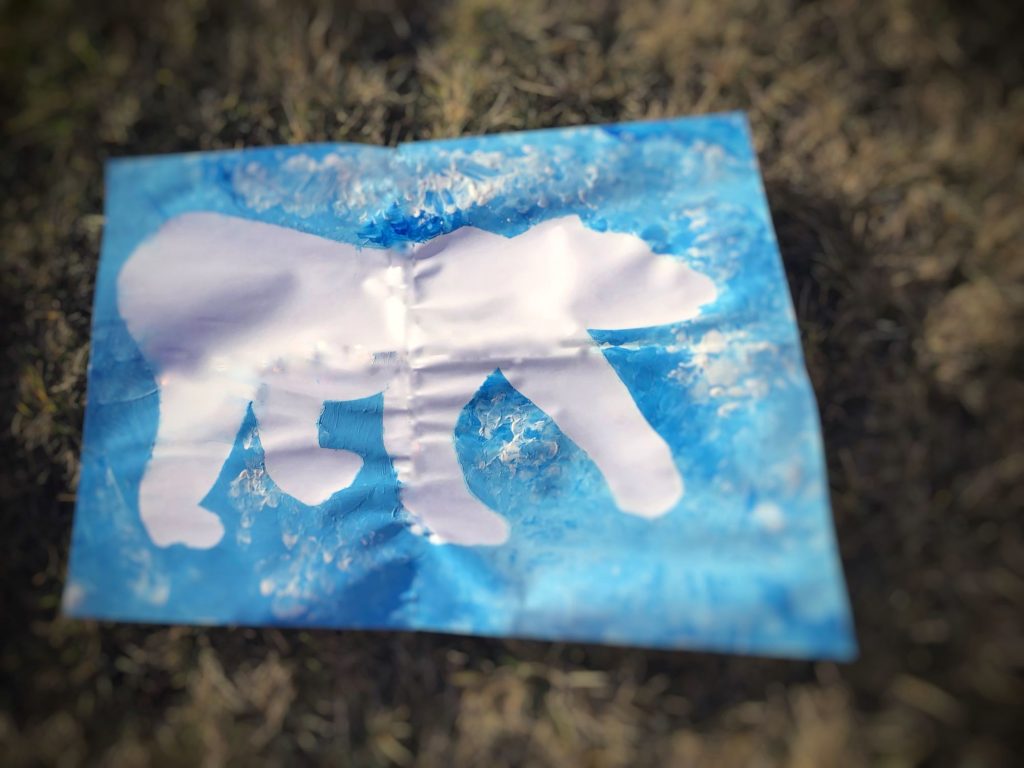
It can be easily done so that the children enjoy the whole process.
Winter Animals
What you need: large tracing paper, white and blue tempera colours, scissors, quarters, washbowl with water.
Children choose some winter, ideally white, animal (but it depends what colour the tracing paper you use is). In our case, the polar bear was chosen.
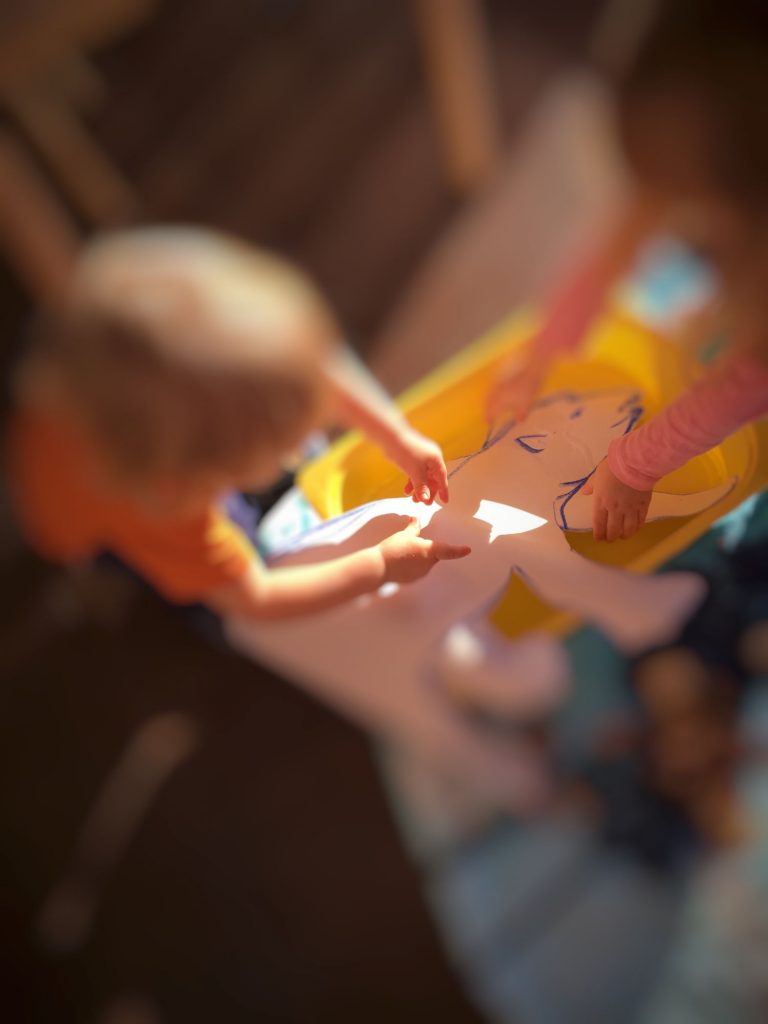
Draw the animal on a large paper and cut out more layers (we had 5 of them). Children then bathe the animal for a few minutes.
Put the wet animal on a large paper – it sticks to it well thanks to water, and the “colour madness” may begin (white and blue tempera colours) and tapping and splashing.
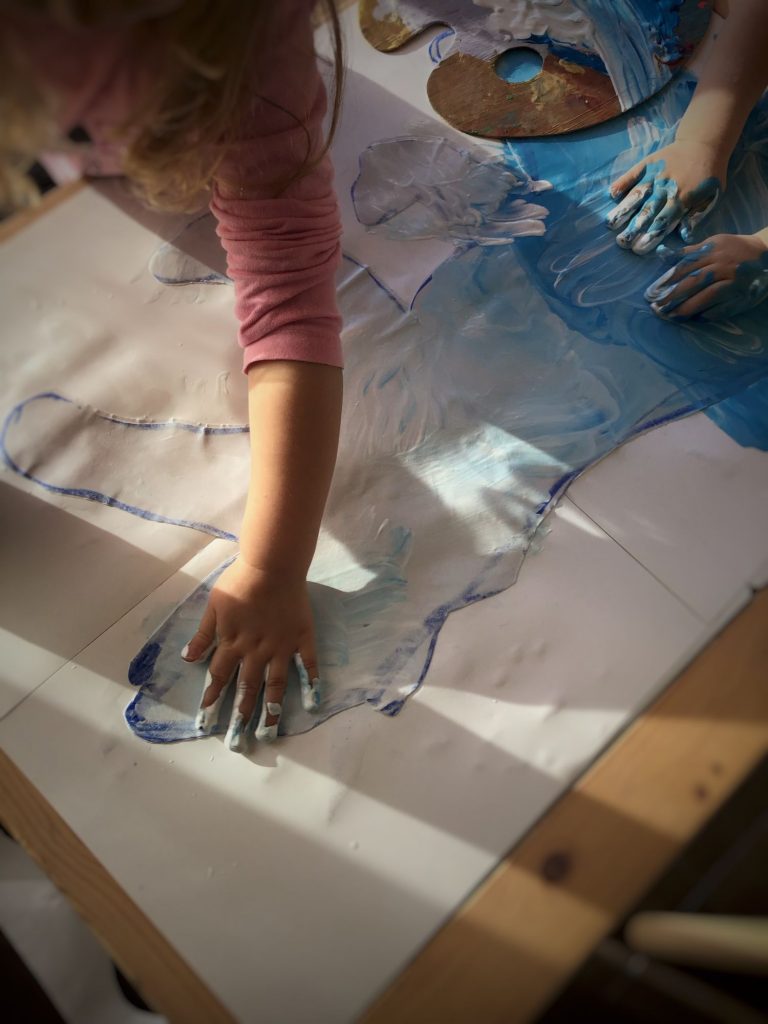
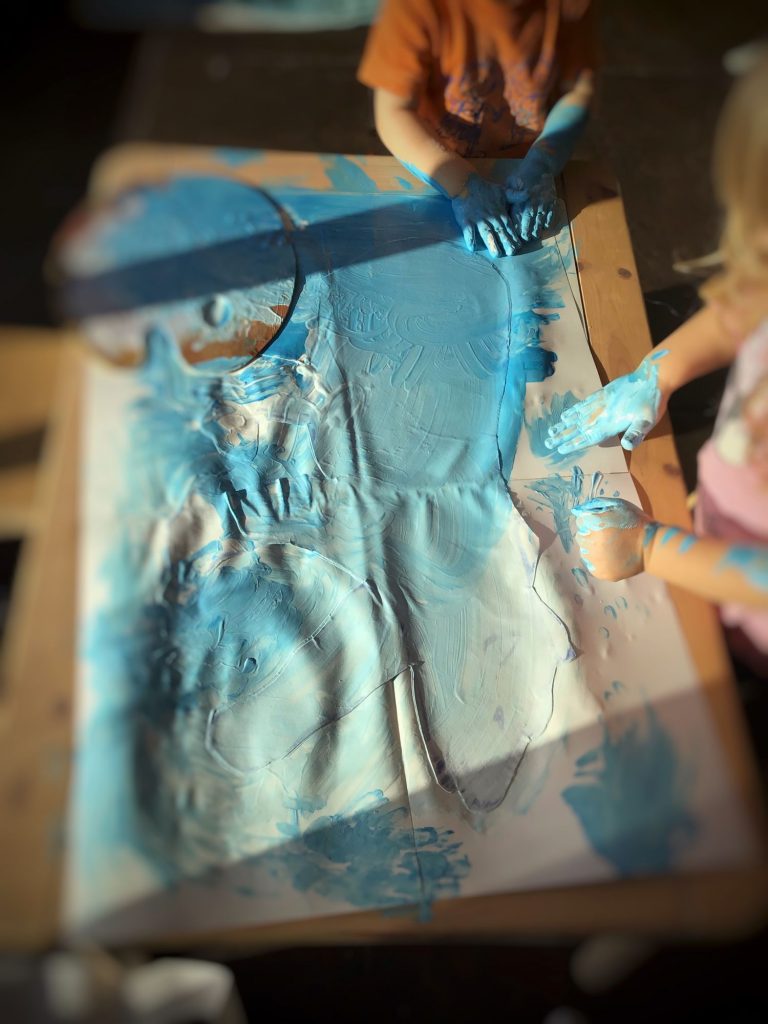
Then comes washing the washbowl and the children. You should be able to make it in a few minutes, which gives enough time to take the animal off the paper (it may not dry there – hope you don’t spend an hour in the bathroom :D)

Butterflies
Another tip is the butterflies mentioned by Adélka before (no worries, I will hopefully soon get to a list of the activities that I often share on social networks but it would make this article way too long).
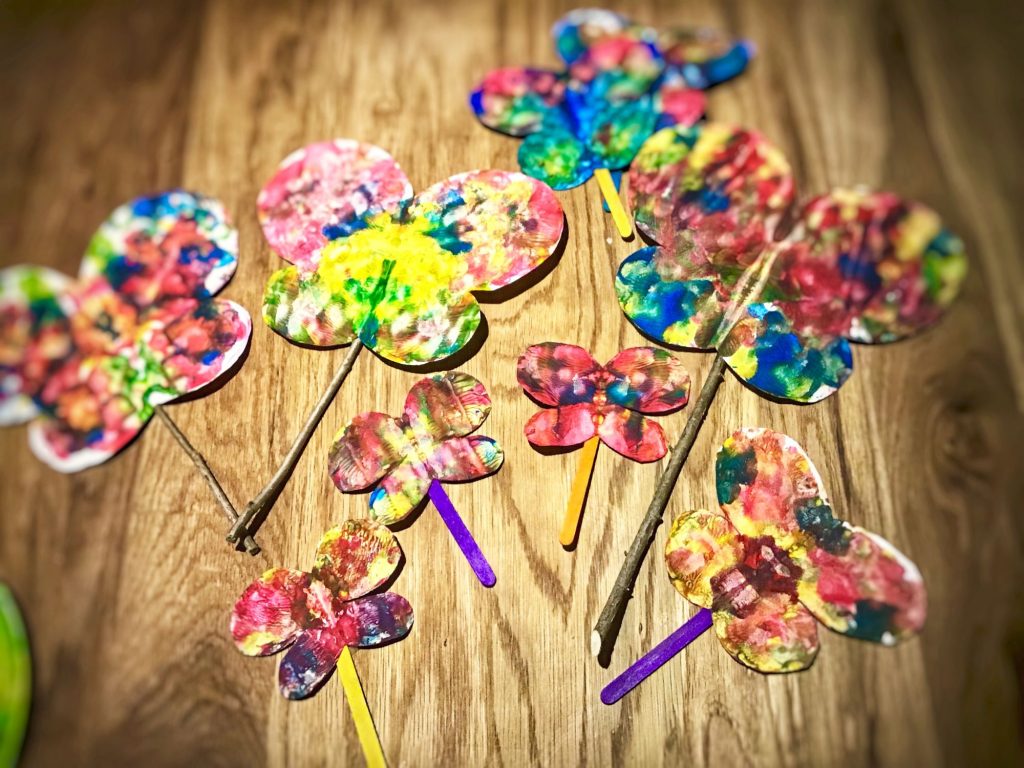
They literally flew off in our home. Because children enjoy them very much and want to make them again and again, together with their friends.

It is easy: you fold a quarter (or cut it first and then you fold it in half, as we have done it) and draw a right wing of a butterfly on that half. When it is folded, you cut it out (you will repeat this innumerably, as children will want more and more).
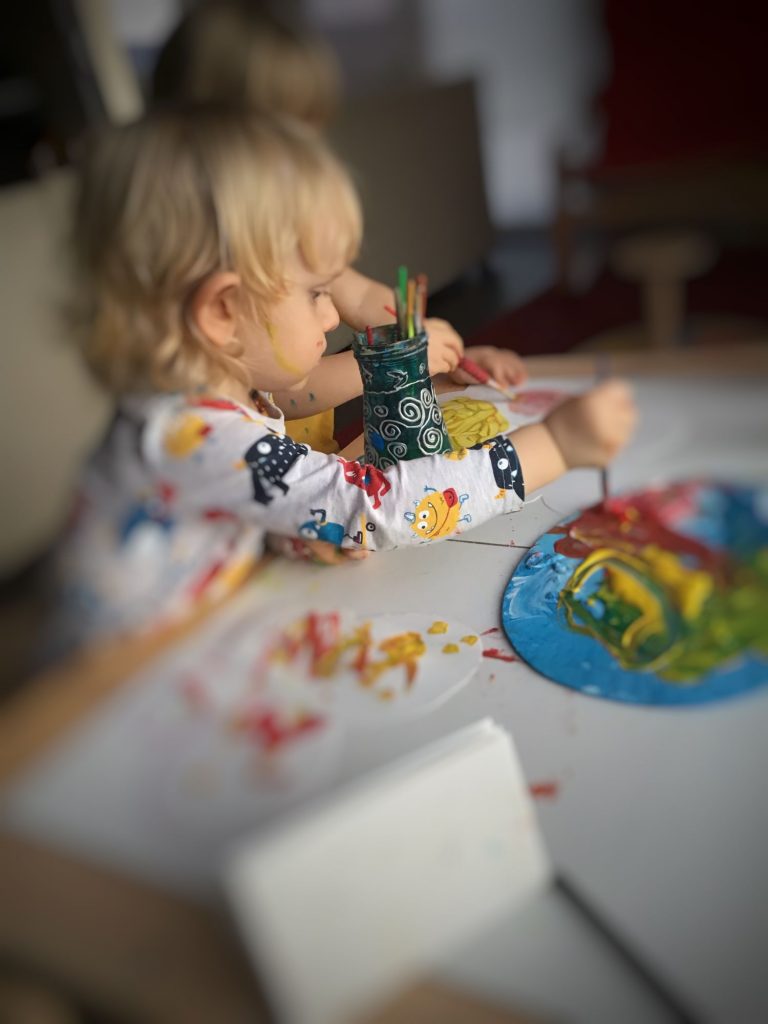
Then you prepare finger or tempera colours. With smaller children I recommend home brewed finger colours.
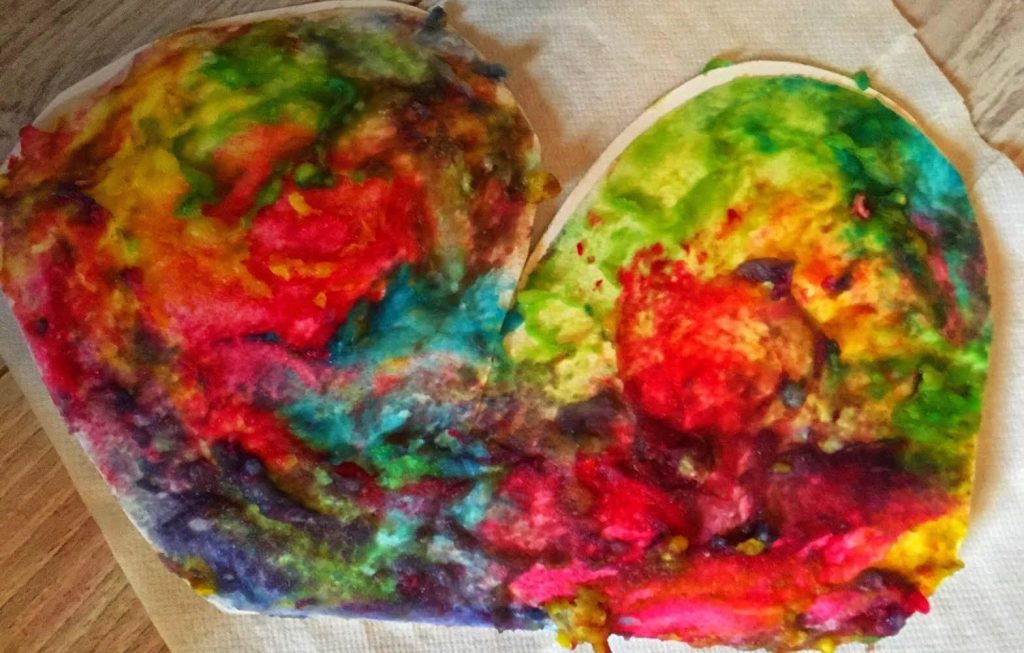
After that you only watch them tapping or laying the colour with a paintbrush on one side of a butterfly, on one wing. It is good to have either a strong layer or a lot of colour mixed with water.

When all the surface is covered with colour, the butterfly is folded with colours facing inside and children imprint one wing on the other. This is a very popular step with my children. They enjoy using force and they tap longer than I think is needed. But why not. ☺ They also experimented with pouring salt with water colours, which is great but thicker layers of colour are more striking.

Our children also enjoy decorating the dried-up butterflies with flowers and little things they find in the house (strings, glitters, embellishments etc.).
They then stick them to pallette knives and fly them all over the flat. We even tried to make a little theatre out of a paper plate: we drew flowers on it and made a cross section allowing the pallette knives to go through. Our children don’t like it much but yours might enjoy it.
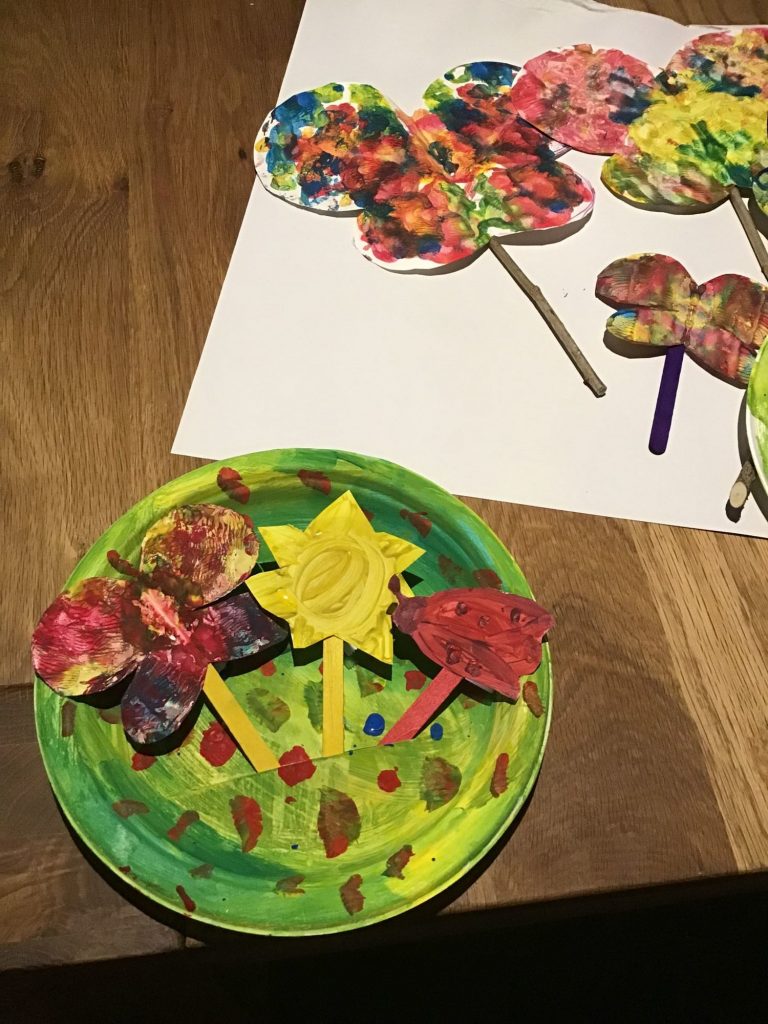
Another process art activity is work with clay. Making anything out of clay has a healing effect. Touch and perceiving by all senses and free play is tremendously important especially for the development of pre-school children.
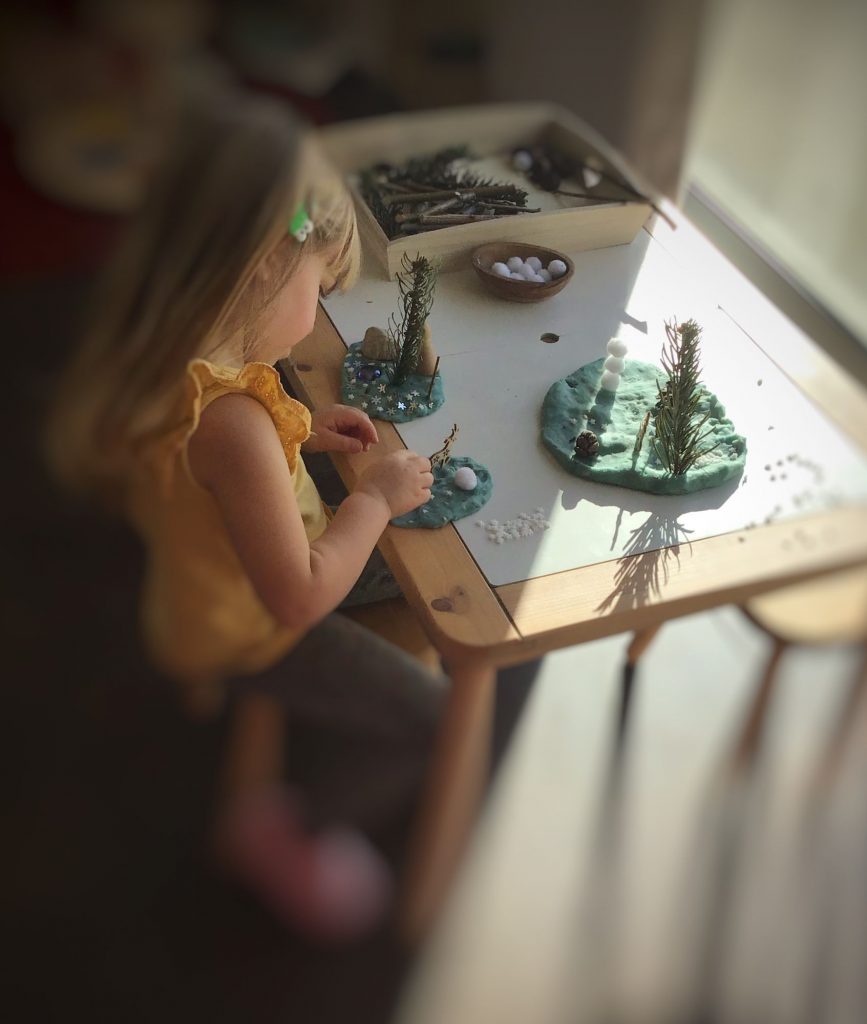
We shouldn’t be afraid of the process and we should let them have it as often as possible.

Of course, I am not saying product-focussed art is wrong. No, it also has many benefits. Children can for example train fine motor skills (e.g., in cutting with scissors).
It is good to know the process-focussed art has a great impact on the development of emotion and social intelligence, so it is also great to introduce it and not to underestimate it.
Of course, I am not saying product-focussed art is wrong. No, it also has many benefits. Children can for example train fine motor skills (e.g., in cutting with scissors).
It is good to know the process-focussed art has a great impact on the development of emotion and social intelligence, so it is also great to introduce it and not to underestimate it.
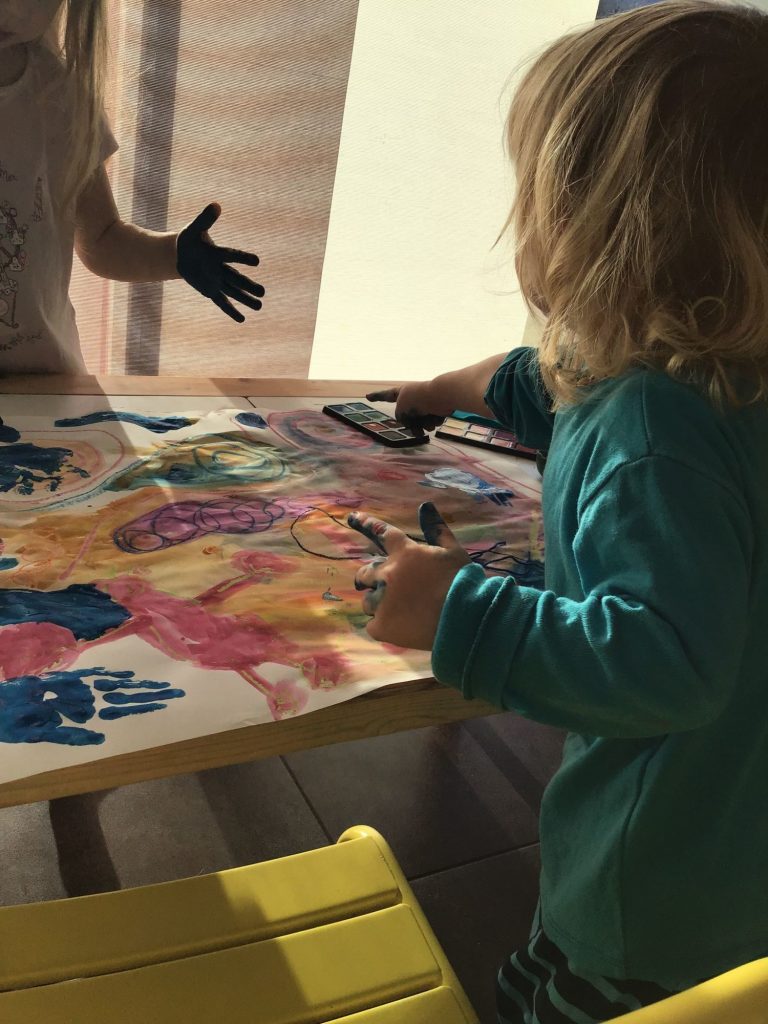
I am fond of art-therapy, so I happily make use of experience-focussed art even in therapy sessions with adults. Guess what always puzzles me at the beginning of such work? A classic sentence: “Gee, but I can’t paint/draw/model. Don’t make me to.”

This is something I would love to gradually change. Let us not limit children, at home or at school, with assessment and by saying what things should look like, what is nice and what is not. We are all unique and we create in a specific manner if we allow ourselves to do so and do not get bound by judgement. The systems have suppressed this in us.
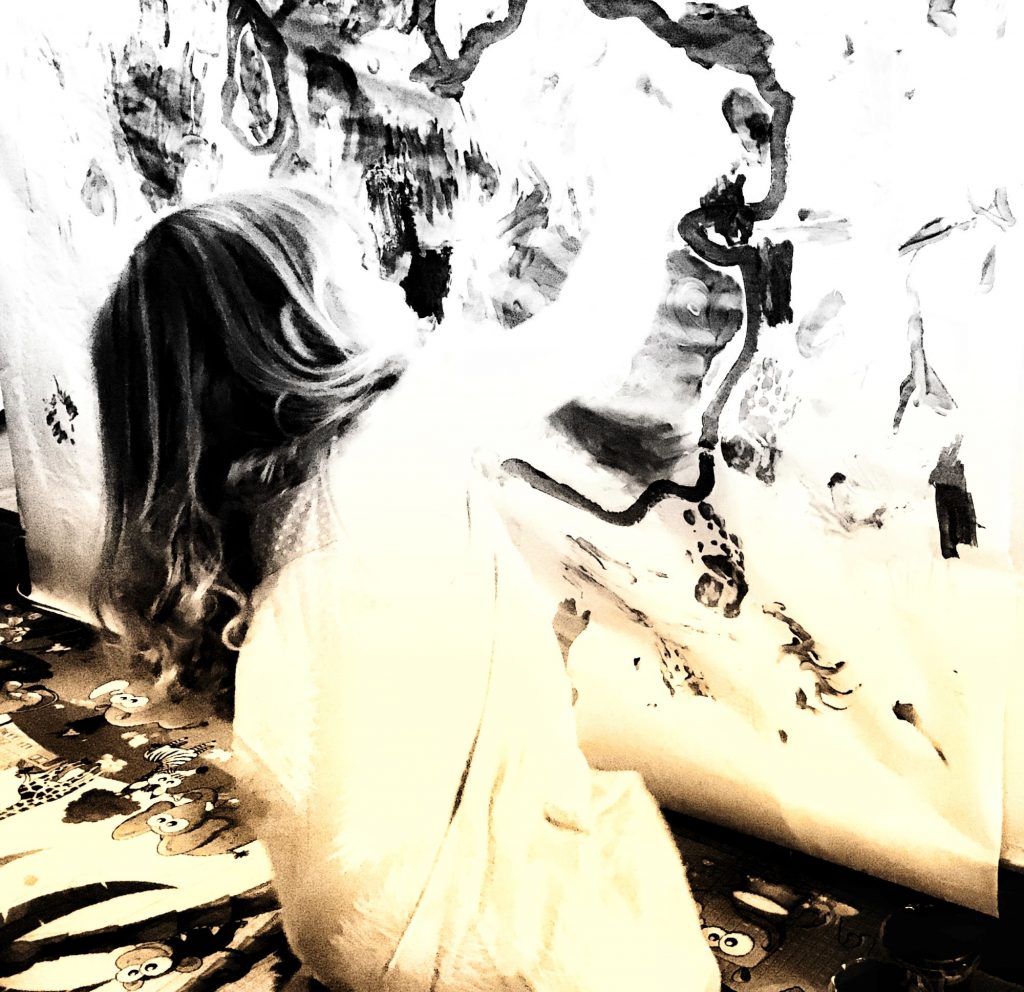
But it is time now to realize some blocks that have formed in us and prevent us from being open to life. This doesn’t have to be in connection with art but with anything else.
Just notice it and gradually open more to who you really are. The same way we should let children grow up into beings who they really are.

Let us support their inner world, so they have a beautiful inner temple built in them, a country they would love returning to.
Because the freedom of exploration and a tight contact with us granted in their first years is hard to make up for in later years.
Play and art are a natural path to children’s development, allowing them to express emotions Actually not only to express but also to train controlling them. After all, you know me – I really enjoy turning all the offered activities into a game.
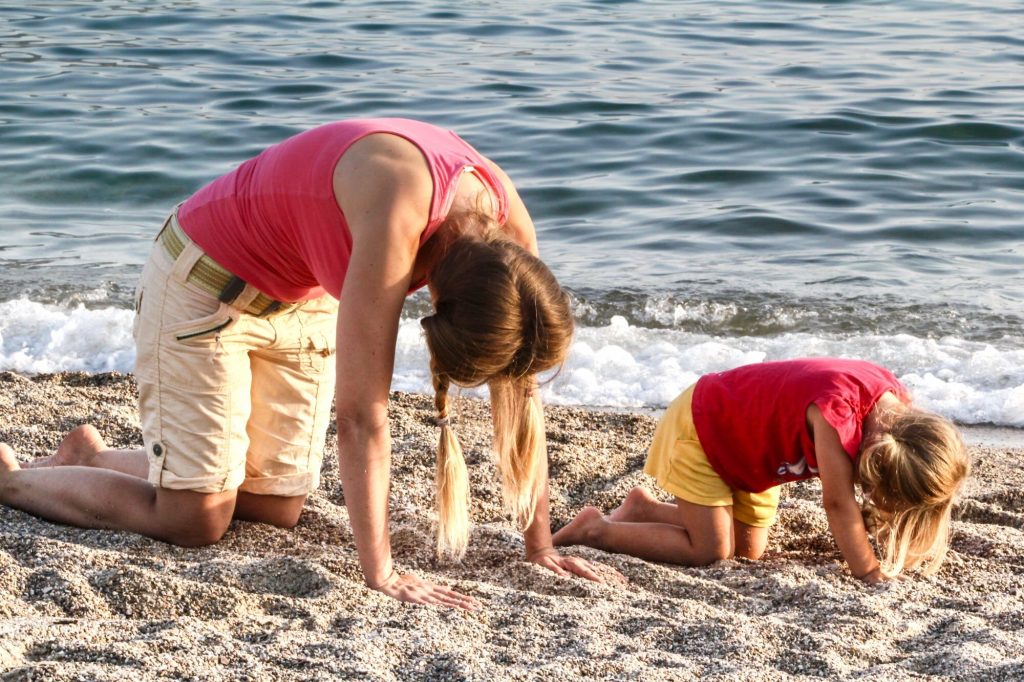
I have just prepared a course of story yoga and meditations for children from 2 to 5/6 years of age. It is a PDF workshop, a recording of meditations and a few videos for inspiration. The course is structured in a way allowing planning the time spent together in play the best way possible. It also contains individual development phases and what might be good to focus on in specific years of children’s age.
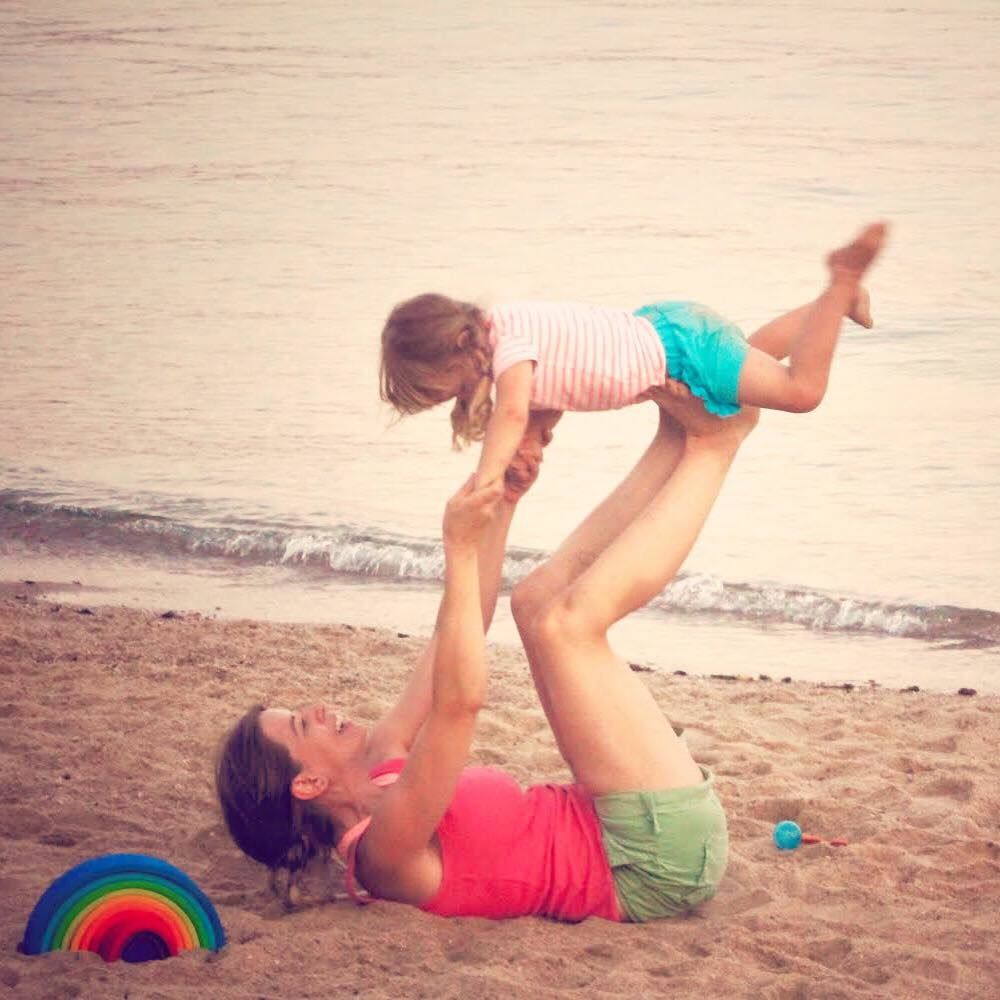
I believe you will enjoy it and at the same time you will teach your child to tune to its body, feelings and emotions.
There is nothing better than a good contact with one’s self, which forms our self-esteem and all relationships in our lives. Have a look at the course and if you happen to know somebody who might benefit from taking it, don’t forget to share the info.
Take care!
Of course, I am not saying product-focussed art is wrong. No, it also has many benefits. Children can for example train fine motor skills (e.g., in cutting with scissors).
It is good to know the process-focussed art has a great impact on the development of emotion and social intelligence, so it is also great to introduce it and not to underestimate it.
Of course, I am not saying product-focussed art is wrong. No, it also has many benefits. Children can for example train fine motor skills (e.g., in cutting with scissors).
It is good to know the process-focussed art has a great impact on the development of emotion and social intelligence, so it is also great to introduce it and not to underestimate it.
Of course, I am not saying product-focussed art is wrong. No, it also has many benefits. Children can for example train fine motor skills (e.g., in cutting with scissors).
It is good to know the process-focussed art has a great impact on the development of emotion and social intelligence, so it is also great to introduce it and not to underestimate it.
Of course, I am not saying product-focussed art is wrong. No, it also has many benefits. Children can for example train fine motor skills (e.g., in cutting with scissors).
It is good to know the process-focussed art has a great impact on the development of emotion and social intelligence, so it is also great to introduce it and not to underestimate it.
When Adele started getting bored, I actually silently crowed with delight. I admit, to have a psychologist for a mother is sometimes not easy.
Each child actually needs to get bored in order to enter their fantasy world.
An empty room can then turn into a magical planet, couch cushions can be used for building a rocket and a box turns into a space suit at once.
I then lose myself in work again when I hear, after a while, how my girl fell down and hurt her knee and some lady or perhaps another girl comes to soothe her.
When Adele started getting bored, I actually silently crowed with delight. I admit, to have a psychologist for a mother is sometimes not easy.
Each child actually needs to get bored in order to enter their fantasy world.
An empty room can then turn into a magical planet, couch cushions can be used for building a rocket and a box turns into a space suit at once.
I then lose myself in work again when I hear, after a while, how my girl fell down and hurt her knee and some lady or perhaps another girl comes to soothe her.
When Adele started getting bored, I actually silently crowed with delight. I admit, to have a psychologist for a mother is sometimes not easy.
Each child actually needs to get bored in order to enter their fantasy world.
An empty room can then turn into a magical planet, couch cushions can be used for building a rocket and a box turns into a space suit at once.
I then lose myself in work again when I hear, after a while, how my girl fell down and hurt her knee and some lady or perhaps another girl comes to soothe her.

